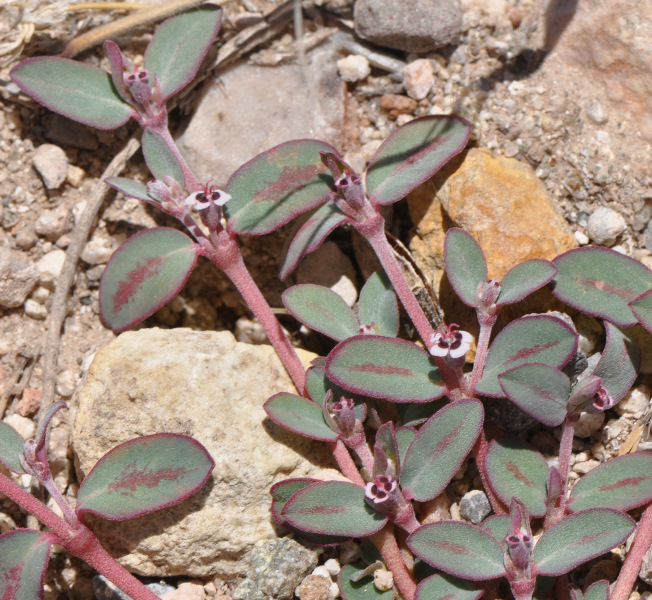
Chamaesyce ("Sandmat") is sometimes considered a subgenus of Euphorbia. Many of the creeping, mat-forming species look very much alike. All have opposite leaves that are unequal in shape (the midvein does not divide the leaf equally, but one half of the leaf is larger than the other). Flowers usually have conspicuous white appendages (these are not petals). Leaves, stems, and flowers usually have some amount of red coloring. Leaf shape, type of hairs (if present), and seed characteristics are important in identification. Most Chamaesyce occupy similar environments: flat, sunny, well-drained, sandy soil, often in disturbed areas, roadsides, dirt roads, washes, etc. Some species are abundant in spring after winter rain, others are not seen until after summer rains, and a few bloom during both growing periods. Some are ephemeral annuals, and a few are perennials. Although sometimes viewed as weeds, Chamaesyce species are important for binding, covering, and protecting loose sediment that is vulnerable to erosion. They also shade the soil and trap moisture under the leaves, allowing seeds of other plants to sprout.